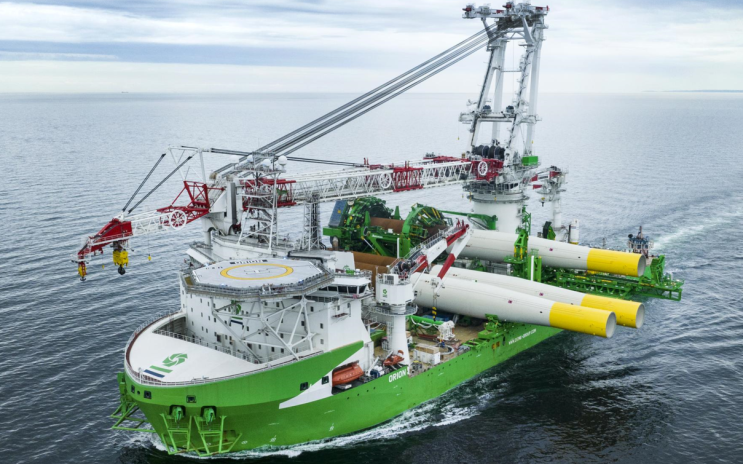Congress is considering federal help to address the labor shortage in the fledging offshore wind industry, which competes for talent to fill many open jobs in the maritime sector.
On Nov. 3, Sen. Edward J. Markey, D-Mass., chair of the Senate Environment and Public Works Subcommittee on Clean Air, Climate and Nuclear Safety, reintroduced the Offshore Wind Jobs and Opportunity Act, that would boost workforce development that is needed by the offshore wind and maritime industries through a new federal grant program.
Markey’s proposal, first introduced last year, would “help create thousands of good paying union jobs in coastal communities through apprenticeship programs, maritime centers of excellence and institutions of higher education.”
The Massachusetts Democrat said his proposal would help the Biden administration meet its goal of deploying 30 gigawatts of offshore wind by 2030. It would direct the secretary of labor to identify offshore wind labor needs and establish a grant program to train new and current workers, provide tuition assistance and support apprenticeship programs.
“The Offshore Wind Jobs and Opportunity Act would prepare workers with the skills and training needed to supercharge our grid with clean energy powered by offshore wind,” the senator said in a statement.
As many other industries, offshore wind is feeling the pinch of a tight labor market and racing to train thousands of workers for jobs. A 2022 report by the National Renewable Energy Laboratory (NREL), part of the Energy Department, said that to meet Biden’s offshore wind capacity target by 2030, more than 44,000 trained and certified workers would be needed in various offshore energy jobs. There are now less than 1,000 workers in this sector, according to DOE estimates.
The NREL said that 68% of wind energy companies have experienced some or great difficulty finding qualified workers. These challenges are seen in all segments: siting and project development, component manufacturing, maritime and ship construction and operations and maintenance of offshore equipment.
Failure to develop a workforce to meet these needs would likely discourage development of new offshore projects and harm those already in the pipeline or operating, various studies have said.
Many in the U.S. maritime industry regard offshore wind development as a business opportunity, as shipbuilders would build Jones Act-compliant vessels to assist in construction and servicing of offshore turbines, and crew them with U.S. mariners.
For example, Foss Maritime, Seattle, has been contracted to transport components for the Vineyard Wind project off Massachusetts, which is the first large-scale offshore wind farm in the U.S. Ports along the East Coast are also busy making accommodations for offshore activity, while maritime schools from Louisiana to Massachusetts have launched offshore wind training and certification programs in addition to their traditional mariner training.
Although the offshore wind workforce is very varied, many jobs demand maritime skills and experience, which means some maritime companies are competing with offshore wind project owners for talent to fill both shoreside and boat positions.
“Fewer applicants have applied to maritime companies, while shoreside work for people with maritime backgrounds, like in the wind farm development business, has significantly increased in 2023,” said Buckley McAllister, president and chief executive of McAllister Towing in New York, which is hoping to land contracts to operate crew transfer vessels, tugs and barges for wind farm construction and maintenance.
Offshore jobs involving maritime experience would include crews to operate crew transfer vessels (CTV), which are like ferries, and service operation vessels (SOV), which would be like articulated tug-barges.
CVTs and SOVs would require mariners with similar training and licenses as those in the inland and coastal industry, while wind farm ports would require similar land personnel for shoreside maritime jobs. One workforce study done for New York state indicated that offshore wind would offer both full-time and part-time opportunities for mariners and fishermen at various stages of offshore development and operations, such as transfer vessels crewing, marine mammal and geophysical surveying, and equipment and buoy positioning.
The NREL suggests that as new skilled workers are being trained, workers from similar industries such as those working in oil and gas facilities in the Gulf of Mexico who are already trained to work at sea, as well commercial fishermen could be recruited for turbine installation without much additional training.
Markey’s legislation was submitted a few days after the Danish wind energy giant Orsted announced it would cancel two offshore wind farms off New Jersey, citing global supply chain delays and rising costs due to high inflation and interest rates. It’s not yet clear how that announcement could affect the outlook for offshore wind jobs.





